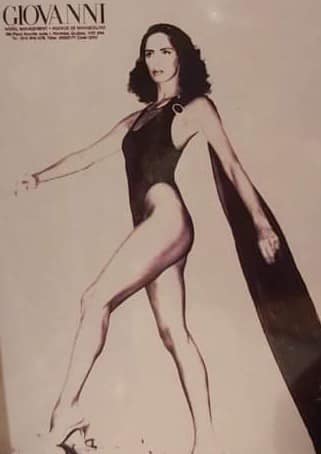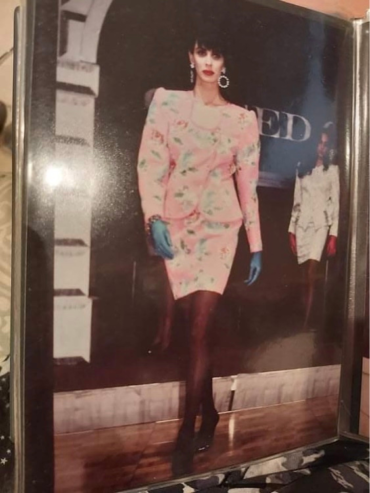June 2022
Month 20xx
Alina Snisarenko & Jasmine Afnan Al-Kholani
Charmaine Gooden
Carol Martin
It was the late ‘70s, and Bijette Spencer had just finished walking the runway for Canadian designer, Wayne Clark. As she hurried to catch the 11:30 train back to Montreal for another booking, the show’s producer stopped her. “Somebody here wants to see you,” he said.
That somebody was the assistant editor for Vogue magazine, who bluntly told her that she had “the face of the ‘80s”. She gave Spencer an offer aspiring models only dream of. “I’d like to take you to Paris to do the collections.” Where most models would jump at the opportunity, Spencer simply told the editor that she wasn’t interested. “Why not? It’s every girl’s dream,” the editor persisted. “I know, but it’s not mine,” said Spencer.
Early Life and Career
Bijette Spencer was part of the first generation of Black models who started to make their mark in the fashion industry, especially in Toronto. Her laid-back, spiritual approach to life is what made the Kingston, Jamaica-born beauty spend 27 years in the industry without a single regret.
Known in the industry as just “Bijette” and as “Bibi” to her close friends, Spencer knew from the age of four that she was destined to be a model. The ambition was fuelled by her grandmother, who she describes as “the most beautiful, elegant, sophisticated woman that I’ve ever seen in my life.”
Toronto’s fashion industry in the early ‘70s saw Black models as ‘too exotic.’
Spencer moved to Toronto when she was 7, and started “dabbling” in modelling from around the age of 16. But Toronto’s fashion industry in the early ‘70s saw Black models as “too exotic,”,according to Spencer.
“Nobody would have me, nobody. I was too tall; most of the models were five foot seven, five foot eight, blue eyes, and blonde and I was naturally a brunette.”
Rejection after rejection ensued, and Spencer was prompted, with encouragement from modelling agency owner Judy Welch, to pack her bags and move to Montreal, the epicentre of Canadian fashion at the time. She was only 20.
Breaking Barriers
Spencer instantly got booked. She says her first gig was to open and close for Simon Chang at Montreal Mode[1], one of the city’s largest annual fashion shows of the year. But the offer came with a catch: She had to cut off her long, brown hair.
“I was crying. They shaved my head. And they completely redid me because I was so different from the other models that they wanted to put a brand on me,” she says. “[But] I was okay with it. Because I figured this is once in a lifetime. I’m a model who was basically rejected in Toronto because of being too exotic, too tall.”
Despite this, Spencer describes her arrival in Montreal as a “Cinderella story.” Her humble, down-to-earth nature pushed the boundaries of a harsh and often prejudiced industry.
Spencer even had a walk named after her; when she realized that the long dress she was modelling was twisted, she ended up walking backwards on the runway to untie the knot. “It was called the Bijette wiggle-waggle. And all the girls had to learn how to do it,” she says.
Influence and Legacy
In light of her success in Montreal, Spencer was asked to come back to Toronto.“Toronto started booking [me] like crazy. First I was rejected and then I was paid to come back,” she says.
She became a staple runway model for Wayne Clark. He even designed a custom dress for her–a glamorous golden gown whose fabric was as delicate as foil. This remains her favourite piece she’s modelled in her career. It was at one of Clark’s Toronto shows that she declined the offer from Vogue’s assistant editor to model abroad.
“I said, “I am very happy at home in Montreal with my animals and my partner. And I have a lot of work [in] Montreal, and I’m very grateful and very happy. So I don’t really need to go,” she says.
Spencer did model a few collections in Paris and Germany, but home came first. “I don’t like to travel. I’m a homebody,” she adds.
Bijette retired in the early 2000s. She spends her time painting animal portraits and restoring furniture. In the summer, she vacations in her renovated trailer, decked out in an angelic pink and gold interior she customized herself.
When asked about her favourite part of modelling, Spencer replied with “every moment I was on stage.” She never once felt nervous. But Bijette doesn’t like to dwell on the past. To her, when one door closes, another one opens.
“To be honest, once I left, I left. I don’t really look back. That’s the rearview mirror. I’m looking ahead right now.”
To this day, the name ‘Bijette’ sparks nostalgia in the fashion community.
About the authors:
No posts found!
No posts found!





